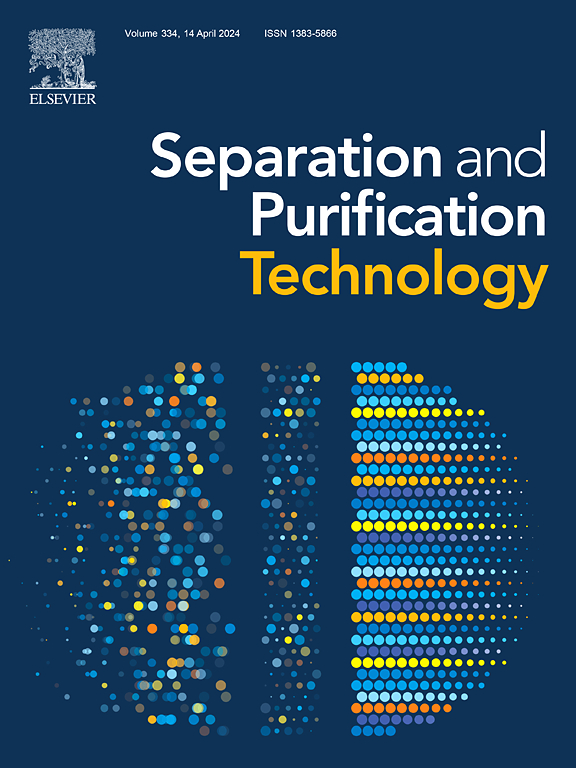Template-free synthesis of intergrown T zeolite with high CH4/N2 selectivity
IF 9
1区 工程技术
Q1 ENGINEERING, CHEMICAL
引用次数: 0
Abstract
Although zeolite adsorbents are widely used for gas separation, current studies predominantly focus on single-phase topological structure. Herein, an intergrowth T zeolite with ERI and OFF topologies was synthesized in a template-free system, and the results showed the CH4 adsorption capacity and CH4/N2 selectivity were 34.4 cm3/g and 5.3 (298 K, 1 bar), respectively. The exceptional performance was attributed to its high microporosity and the 6-member ring (6-MR) structure at the intergrowth interface, which synergistically optimize the distribution of adsorption sites, as evidenced by density functional theory (DFT) calculations. Breakthrough experiments demonstrated that intergrowth T zeolite can effectively separate CH4/N2 mixtures (50/50 and 20/80; v/v) with actual separation times of 7.0 min and 10.4 min. Furthermore, two-bed six-step pressure swing adsorption (PSA) simulations further indicated that 20 % of the pristine CH4 could be enriched to over 50 %, with a recovery rate of 87 %, demonstrating significant potential for upgrading low-concentration coal-bed methane.


高CH4/N2选择性杂交T型沸石的无模板合成
虽然沸石吸附剂广泛用于气体分离,但目前的研究主要集中在单相拓扑结构上。本文在无模板体系中合成了一种具有ERI和OFF拓扑结构的互生T分子筛,结果表明,其CH4吸附量和CH4/N2选择性分别为34.4 cm3/g和5.3(298 K, 1 bar)。密度泛函理论(DFT)计算证明,这种优异的性能归因于其高微孔隙度和生长界面处的6元环(6-MR)结构,这两种结构协同优化了吸附位点的分布。突破性实验表明,共生T沸石能有效分离CH4/N2混合物(50/50和20/80);V / V),实际分离时间分别为7.0 min和10.4 min。此外,两层六步变压吸附(PSA)模拟进一步表明,20 %的原始CH4可富集至50 %以上,回收率为87 %,显示了低浓度煤层气的改造潜力。
本文章由计算机程序翻译,如有差异,请以英文原文为准。
求助全文
约1分钟内获得全文
求助全文
来源期刊

Separation and Purification Technology
工程技术-工程:化工
CiteScore
14.00
自引率
12.80%
发文量
2347
审稿时长
43 days
期刊介绍:
Separation and Purification Technology is a premier journal committed to sharing innovative methods for separation and purification in chemical and environmental engineering, encompassing both homogeneous solutions and heterogeneous mixtures. Our scope includes the separation and/or purification of liquids, vapors, and gases, as well as carbon capture and separation techniques. However, it's important to note that methods solely intended for analytical purposes are not within the scope of the journal. Additionally, disciplines such as soil science, polymer science, and metallurgy fall outside the purview of Separation and Purification Technology. Join us in advancing the field of separation and purification methods for sustainable solutions in chemical and environmental engineering.
 求助内容:
求助内容: 应助结果提醒方式:
应助结果提醒方式:


